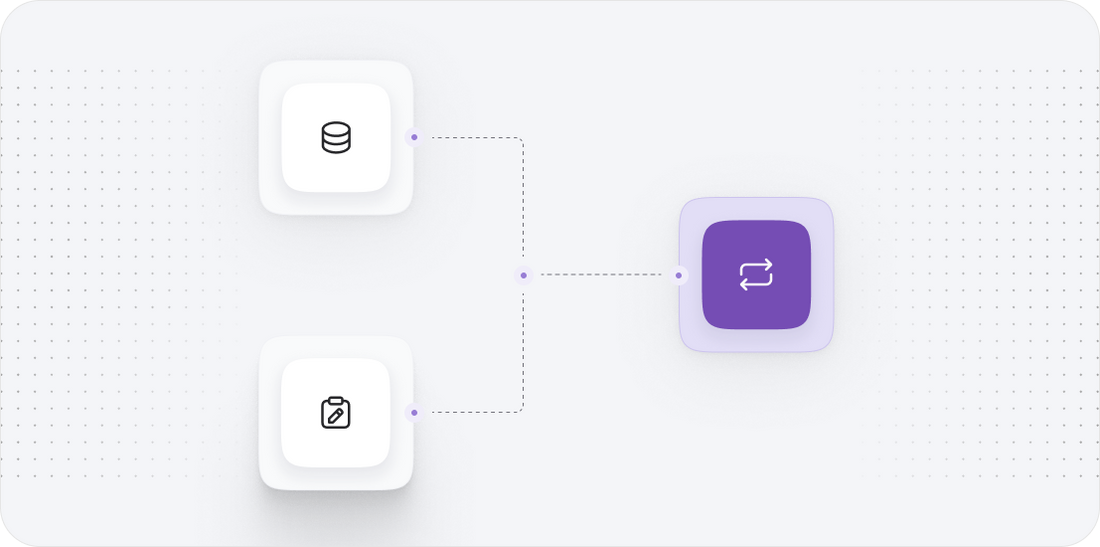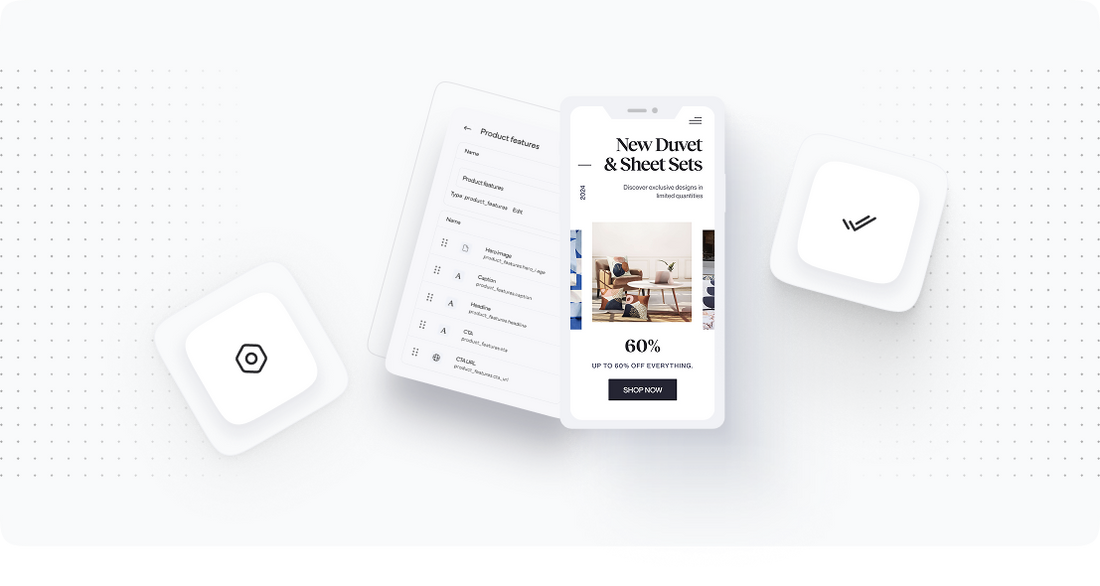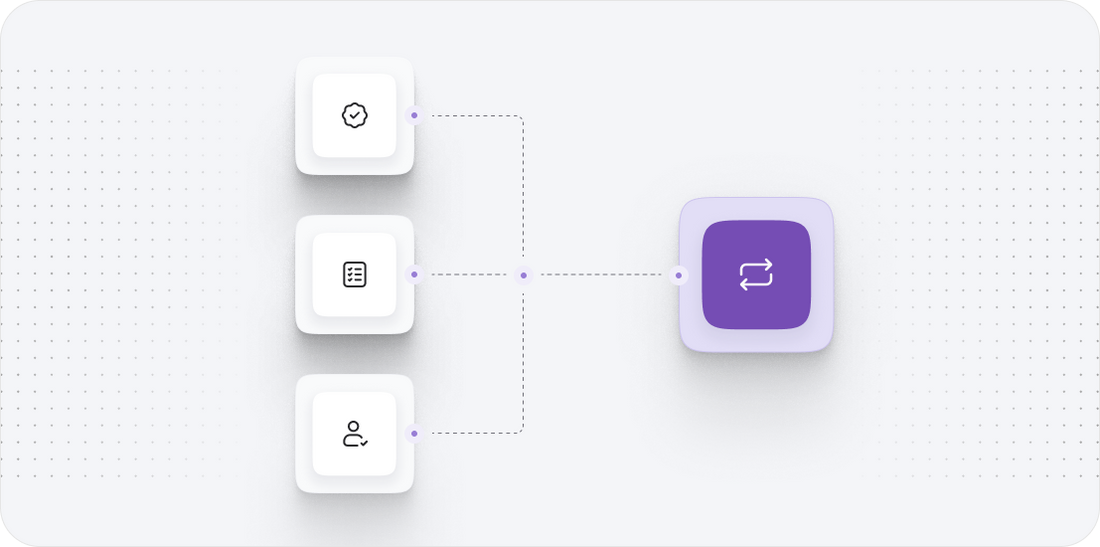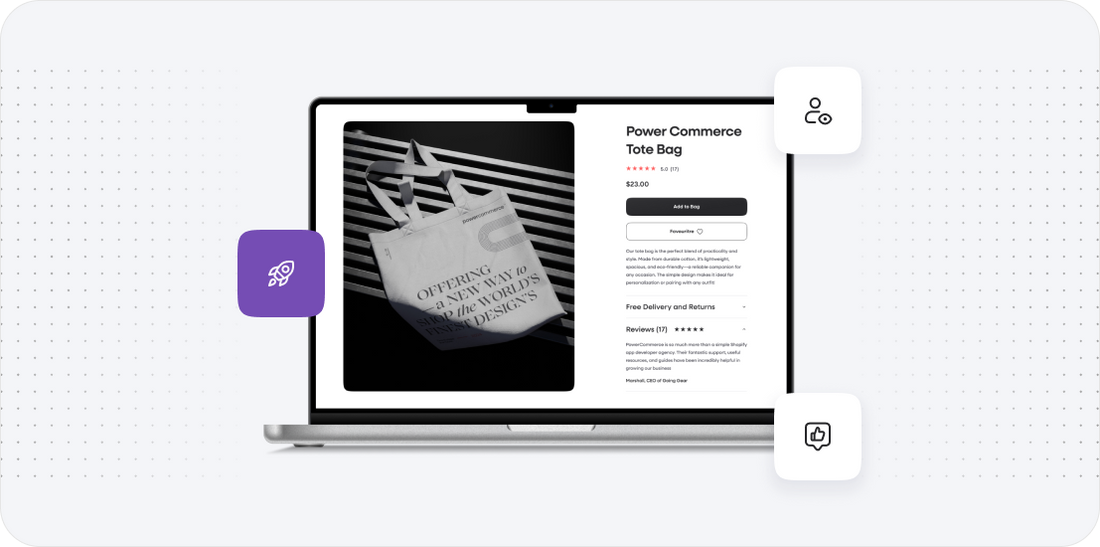





Webflow to Visualsoft
Migrating your store from Webflow to Visualsoft might seem daunting, but with proper planning and the right tools, it's a smooth process. Follow this step-by-step guide to ensure a successful transition.
Schedule a call
Step-by-Step Migration Guide: Webflow to Visualsoft migration guide
Step 1: Preliminary Assessment
In this initial step, we perform a comprehensive assessment of your current Webflow setup to identify all critical elements that need to be migrated to Visualsoft. This includes evaluating your existing site structure, content, and functionality.
Step 2: Data Backup
Before proceeding with the migration, we ensure that a complete backup of your Webflow site is created. This serves as a safety net, allowing us to restore if needed during the migration process.
Step 3: Platform Setup in Visualsoft
In this step, we set up your new Visualsoft environment, ensuring that it is configured to accommodate all aspects of your migrated data and functionality.
Step 4: Data Migration
With the Visualsoft environment ready, we begin the actual migration of data from Webflow. This step involves transferring all content, products, and configurations to the new platform.
Step 5: Design and User Experience Alignment
In this step, we focus on aligning the design and user experience of your Visualsoft store with your previous Webflow site, ensuring a seamless transition for your customers.
Step 6: Final Testing and Quality Assurance
Before launching your new Visualsoft store, we conduct extensive testing and quality assurance to ensure that everything functions correctly and meets your business requirements.
Step 7: Launch and Post-Migration Support
In the final step, we launch your new Visualsoft store and provide ongoing support to address any issues that arise and to optimize performance.
Power Your Step - Get in Touch
Ready to migrate your ecommerce platform? Our expert team at PowerCommerce is here to assist you every step of the way. Reach out today!
Step 1: Preliminary Assessment
Objective: The first step of our migration process is to conduct a thorough preliminary assessment of your existing Webflow site. This assessment is crucial as it lays the groundwork for a successful migration to Visualsoft. By identifying the key components of your current setup, we can ensure that no vital data or functionality is left behind during the transition.
During the assessment, we will review your site structure, including all pages, collections, and content types. We also analyze the existing functionality and features that your site currently utilizes, such as integrations, custom code, and third-party applications. This detailed evaluation will help us create a migration plan that addresses potential challenges and preserves your site's integrity.
Detailed Procedure:
- Gather Information: Compile a list of all existing pages, collections, and components within your Webflow site. This includes product pages, blogs, landing pages, and any custom features.
- Evaluate Content: Review all content types that will need to be migrated, including text, images, videos, and other media. Make note of any content that may require reformatting or optimization.
- Analyze Functionality: Identify all functionalities present on your Webflow site, such as forms, e-commerce features, and custom scripts. Ensure that we have a clear understanding of how these elements operate.
- Document Integrations: List all third-party integrations and applications connected to your Webflow account. This may include payment gateways, shipping services, and marketing tools.
- Identify SEO Elements: Take note of SEO settings, including meta titles, descriptions, and alt texts for images. This will be essential for maintaining your site's SEO performance post-migration.
Technical Considerations: Ensure that all collected data is organized and stored in a format that can be easily referenced during the migration. This may involve creating a migration checklist or spreadsheet to track each element's status.
Best Practices:
- Conduct the assessment during a low-activity period to minimize disruptions.
- Involve key stakeholders in the review process to ensure all important elements are captured.
- Use tools like Screaming Frog to analyze your current site's structure and SEO elements.
Tools and Resources:
Screaming Frogfor SEO analysis.Google Analyticsto review traffic sources and user behavior.Export features in Webflowto gather data for migration.
Troubleshooting Tips: If you encounter issues during the assessment, consider reaching out to your Webflow support team for assistance in retrieving specific data points.
Checklist:
- Complete inventory of all pages and collections.
- Documented content types and functionalities.
- List of third-party integrations and their statuses.
- SEO elements recorded for each page.

Step 2: Data Backup
Objective: The second step in our migration process is to create a comprehensive backup of your Webflow site data. This crucial step provides a safety net should any issues arise during the migration, ensuring that you can revert to your original site if necessary.
Backing up your data involves securing copies of all site content, including pages, media, and custom code. Additionally, it is essential to export any existing settings and configurations that will need to be replicated in Visualsoft.
Detailed Procedure:
- Export Site Content: Use Webflow’s export feature to download all HTML, CSS, and JavaScript files associated with your site. This can typically be done from the project settings menu.
- Backup Media Files: Download all images, videos, and other media files that are hosted in your Webflow project. Ensure that these files are organized for easy access later.
- Record Settings: Document all settings and configurations that may need to be transferred to Visualsoft. This includes e-commerce settings, custom code snippets, and any custom fields created in Webflow.
- Store Backups Securely: Save all exported files and documentation in a secure location, such as a cloud storage service, to ensure easy access during the migration.
Technical Considerations: It is essential to ensure that your exports are complete and free of errors. Verify that all necessary files are downloaded before proceeding to the next step.
Best Practices:
- Perform backups during off-peak hours to reduce the likelihood of disruptions.
- Check for any broken links or missing files after exporting to ensure a complete backup.
- Use version control systems to track changes in your code and settings.
Tools and Resources:
Webflow Exportfeature for site files.Google DriveorDropboxfor secure storage of backups.
Troubleshooting Tips: If you encounter issues exporting your site, consult Webflow's help documentation or reach out to their support for guidance.
Checklist:
- All site files exported and downloaded.
- Media files backed up and organized.
- Settings documented for transfer.

Step 3: Platform Setup in Visualsoft
Objective: The third step in our migration process involves setting up your new Visualsoft environment. This setup is critical to ensure that the platform is prepared to handle all content, features, and functionality that will be migrated from Webflow.
During this phase, we will configure essential settings, set up product categories, and establish any required integrations that will support your ecommerce operations.
Detailed Procedure:
- Create a New Visualsoft Account: Sign up for a new Visualsoft account if you haven't done so already. Follow the initial setup instructions provided by Visualsoft.
- Configure Basic Settings: Access the settings panel in Visualsoft and configure essential parameters such as store name, currency, and shipping options. Ensure that these settings reflect your business needs.
- Set Up Product Categories: Create product categories and subcategories that mirror your existing structure in Webflow. This will facilitate a smoother migration of product data.
- Integrate Necessary Tools: Install and configure any third-party integrations that your business relies on, such as payment gateways and shipping partners. Verify that they are set up correctly to ensure smooth operations post-migration.
- Enable SEO Settings: Configure SEO settings within Visualsoft to align with your existing practices from Webflow. This includes setting up URL structures, meta descriptions, and any necessary redirects.
Technical Considerations: Ensure that all configurations are compatible with the data being migrated. This includes verifying that product categories and settings are consistent with your ecommerce strategy.
Best Practices:
- Consult Visualsoft's documentation for detailed setup instructions.
- Engage with Visualsoft's support team for assistance during the setup process.
- Test integrations thoroughly to ensure they function as expected.
Tools and Resources:
Visualsoft Documentationfor initial setup guidelines.Integration Setup Guidesfor third-party tools.
Troubleshooting Tips: If you encounter issues during the setup, check Visualsoft's FAQ or contact their customer support.
Checklist:
- New Visualsoft account created.
- Basic settings configured correctly.
- Product categories established.
- Necessary integrations installed and configured.
- SEO settings aligned with previous practices.

Step 4: Data Migration
Objective: The fourth step is the actual data migration from your Webflow site to Visualsoft. This step is crucial as it involves transferring all content, products, and configurations to ensure continuity and functionality.
Data migration must be executed carefully to minimize data loss and ensure that all elements are accurately represented in the new environment. We will employ automated tools where possible to facilitate this process.
Detailed Procedure:
- Export Data from Webflow: Using the Webflow export feature, generate a CSV file containing all relevant data, including product information, customer data, and order history.
- Prepare Data for Visualsoft: Clean and format the exported CSV data to match Visualsoft’s import requirements. This may involve adjusting column headers and ensuring that all necessary fields are included.
- Import Data into Visualsoft: Utilize Visualsoft’s import feature to upload the prepared data. Follow the prompts to map fields correctly to ensure that all information is accurately transferred.
- Verify Data Integrity: After the import, perform a thorough review of the data within Visualsoft. Check for discrepancies, missing information, or formatting issues that may have occurred during the migration.
- Test Functionality: Conduct tests to ensure that all migrated elements function as expected. This includes testing product pages, checkout processes, and any custom features that have been transferred.
Technical Considerations: Pay special attention to data types and formats to ensure compatibility with Visualsoft. Use tools like Excel to manipulate and format data as needed.
Best Practices:
- Conduct the data migration during off-peak hours to minimize disruption.
- Create a backup of the Visualsoft environment before starting the import process.
- Utilize automated migration tools where applicable to save time and reduce errors.
Tools and Resources:
CSV File Exportfrom Webflow.Excelfor data preparation and cleaning.
Troubleshooting Tips: If data discrepancies are found post-migration, consult Visualsoft’s support for assistance in resolving any issues.
Checklist:
- Data exported from Webflow successfully.
- Data cleaned and formatted for Visualsoft.
- Data imported into Visualsoft without errors.
- Data integrity verified and tested.

Step 5: Design and User Experience Alignment
Objective: The fifth step in our migration process is to align the design and user experience of your Visualsoft store with what your customers are accustomed to from your Webflow site. This step is essential for maintaining brand consistency and ensuring a smooth transition for your users.
By replicating the look and feel of your Webflow site, we can help customers navigate your new Visualsoft store with ease, thereby minimizing any potential confusion or frustration during the transition.
Detailed Procedure:
- Analyze Existing Design Elements: Review the design elements from your Webflow site, such as color schemes, typography, and layout configurations. Take note of specific features that enhance the user experience.
- Replicate Design in Visualsoft: Using Visualsoft's design customization tools, replicate the essential design elements from your Webflow site. Ensure that the overall aesthetics match and that the user interface remains intuitive.
- Customize User Flows: Map out critical user flows, such as the purchase process and navigation paths. Adjust settings within Visualsoft to ensure that these flows function similarly to how they did on Webflow.
- Implement Responsive Design: Ensure that your Visualsoft store is fully responsive, just like your Webflow site. Test across different devices and screen sizes to confirm that the design adapts appropriately.
- Conduct User Testing: Before going live, conduct user testing sessions to gather feedback on the design and user experience. This will help identify any areas that may require adjustments.
Technical Considerations: Pay attention to how Visualsoft handles design elements compared to Webflow, as some customization options may differ.
Best Practices:
- Involve your design team in the replication process to ensure fidelity to your original design.
- Test design changes in a staging environment before going live.
- Gather feedback from real users to inform final adjustments.
Tools and Resources:
Visualsoft Design Toolsfor customization.User Testing Platformsfor feedback collection.
Troubleshooting Tips: If design elements do not replicate as intended, consult Visualsoft’s support documentation for guidance on customization.
Checklist:
- Design elements replicated in Visualsoft.
- User flows customized to match Webflow.
- Responsive design confirmed across devices.
- User testing conducted and feedback collected.

Step 6: Final Testing and Quality Assurance
Objective: The sixth step is to conduct comprehensive final testing and quality assurance on your new Visualsoft store. This phase is critical to ensure that all functionalities work as intended and that the user experience meets your standards.
By thoroughly testing every aspect of your site, we can identify and resolve any issues before the official launch, thereby minimizing the risk of disruptions or negative user experiences.
Detailed Procedure:
- Functional Testing: Test all functionalities, including product search, filtering, checkout processes, and integrations. Ensure that every feature operates correctly and that data is accurately processed.
- Performance Testing: Assess the site's speed and responsiveness under various conditions. Use tools to simulate traffic and monitor loading times to ensure optimal performance.
- Responsive Testing: Confirm that the site displays correctly across all devices and screen sizes. Test on various browsers to ensure compatibility and identify any issues.
- SEO Testing: Verify that all SEO settings are properly configured, including meta titles, descriptions, and URL structures. Use SEO analysis tools to identify areas for improvement.
- Security Testing: Conduct security checks to ensure that all customer data is protected and that there are no vulnerabilities in the system.
Technical Considerations: Document all testing procedures and results to ensure that any issues can be tracked and addressed systematically.
Best Practices:
- Involve multiple team members in testing to gather diverse perspectives.
- Schedule testing sessions during peak and off-peak hours to assess performance under different loads.
- Utilize automated testing tools to streamline the process and enhance accuracy.
Tools and Resources:
Performance Testing Toolslike GTMetrix.SEO Analysis Toolslike SEMrush or Moz.
Troubleshooting Tips: If issues arise during testing, prioritize fixing critical functionalities first to ensure a smooth launch.
Checklist:
- All functionalities tested and confirmed operational.
- Performance metrics within acceptable ranges.
- Responsive design verified across devices.
- SEO settings optimized and checked.
- Security measures validated.

Step 7: Launch and Post-Migration Support
Objective: The seventh and final step is to launch your new Visualsoft store and ensure that it operates smoothly after the migration. This step includes monitoring site performance and addressing any immediate issues that may arise.
Post-launch support is essential to optimize performance, enhance user experience, and ensure that the transition is as seamless as possible for your customers.
Detailed Procedure:
- Launch the Site: Once all testing is complete and issues addressed, officially launch your Visualsoft store. Update any necessary DNS settings if you’re using a custom domain.
- Monitor Performance: Keep a close eye on site performance metrics immediately following the launch. Use analytics tools to track user behavior, sales, and any potential issues.
- Gather User Feedback: Encourage customers to provide feedback on their experience with the new site. This can help identify areas for improvement.
- Implement Optimizations: Based on performance data and user feedback, make any necessary adjustments to enhance the site’s functionality and user experience.
- Provide Ongoing Support: Establish a support system to address any questions or issues your users may encounter. Ensure that your team is prepared to assist during this transition period.
Technical Considerations: Ensure that all integrations and functionalities are closely monitored for any discrepancies that may arise post-launch.
Best Practices:
- Communicate with your customer base about the transition to prepare them for any changes.
- Use a phased launch strategy to gradually introduce the new site to your audience if necessary.
- Set up alerts for critical performance metrics to quickly identify issues.
Tools and Resources:
Google Analyticsfor monitoring post-launch performance.User Feedback Toolslike SurveyMonkey for gathering insights.
Troubleshooting Tips: If issues arise post-launch, prioritize resolving any critical functionalities that impact user experience.
Checklist:
- Site launched and accessible to users.
- Performance monitored and metrics analyzed.
- User feedback collected and reviewed.
- Optimizations implemented based on data.

Power Your Step - Get in Touch
Partner with PowerCommerce for a Seamless Migration!
At PowerCommerce, we understand the complexities involved in migrating from one ecommerce platform to another. Our experienced team is dedicated to ensuring your transition from Webflow to Visualsoft is smooth, efficient, and tailored to your specific business needs.
Don’t leave your migration to chance; our proven process and commitment to excellence guarantee a successful outcome. We focus on minimizing downtime and maximizing performance, allowing you to concentrate on growing your business.
Contact us today to start your migration journey!
- Visit our contact form to fill out your details.
- Call us directly at 800-099-9090.
- Email us at info@powercommerce.com to discuss your project.
Let us empower your ecommerce growth with our innovative solutions and expert support. Your success is our mission!
Stay aligned on what's happening in the commerce world
Trusted by 1000+ innovative companies worldwide
Schedule Your Migration Today
For businesses prioritizing simplicity, scalability, and robust support, Shopify is the clear winner.
Looking to migrate without hassle? Power Commerce can handle the entire process, ensuring smooth data transfer, store setup, and post-launch success.
Marka Marulića 2, Sarajevo, 71000 BiH
00387 60 345 5801
info@powercommerce.com


